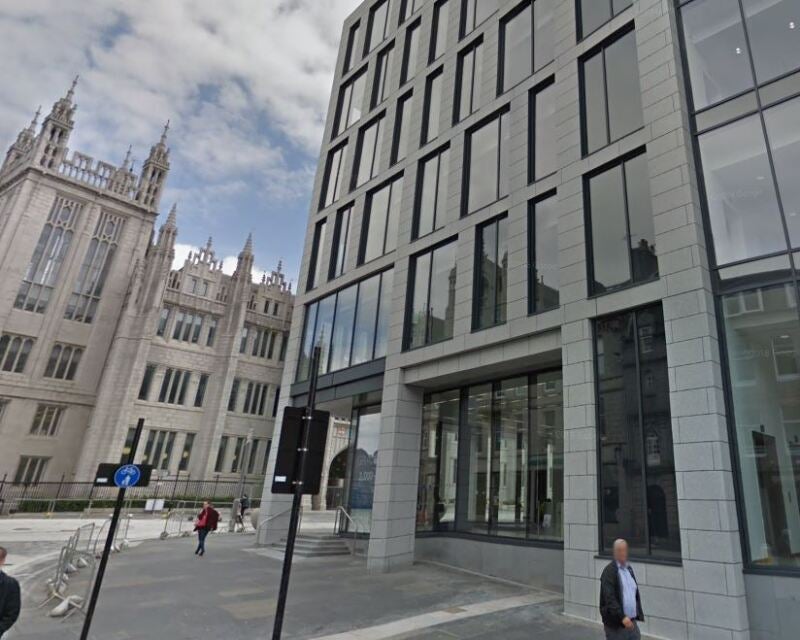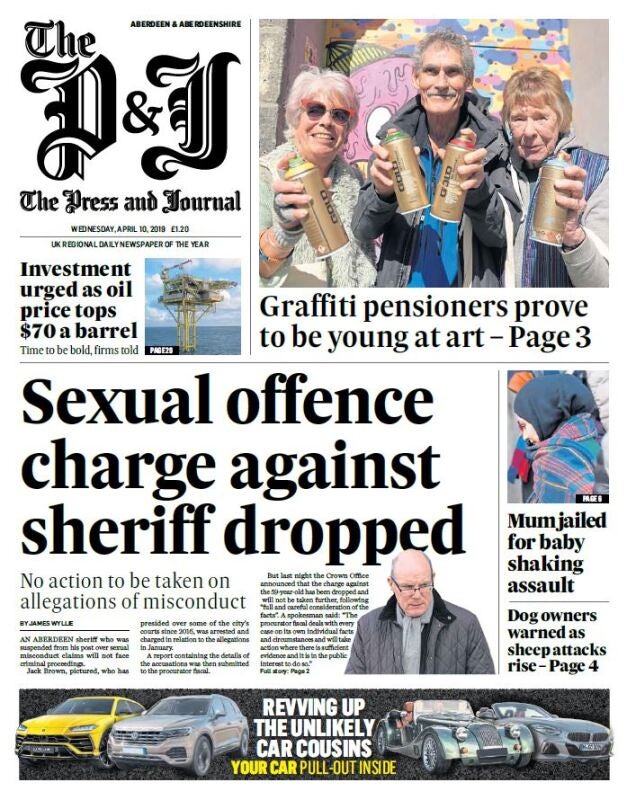
The editor of the UK’s top-selling daily regional newspaper is optimistic about his title’s chances as he faces down the twin challenges of growing online revenues while protecting a print legacy, he tells Press Gazette.
Alan McCabe was made editor of the Press and Journal at the start of the year after owner DC Thomson reshuffled senior editorial staff. The paper sells close to 44,000 copies (per latest ABC figures).
The “P and J”, as it’s affectionately known, moved its headquarters back into Aberdeen city centre in August last year after 49 years away, bucking the trend of many UK regional titles whose publishers move them out of expensive town centre offices in a bid to cut costs.
McCabe told Press Gazette the office move, which once more put Press and Journal staff within a stone’s throw of Aberdeen’s court, police station and council chamber, had been a “hugely positive change”.
‘Spring in their step’
“Basically we’re where a newspaper office should be,” he said, adding that the change in location had “definitely helped” improve engagement with the community and the visibility of newspaper staff in the area.
Since 1970 the newspaper had been based in an industrial estate on the outskirts of Aberdeen, but dwindling staff numbers had left empty chairs in a “rambling industrial building” and “didn’t make for the most collaborative working environment,” McCabe said.
But he said of the new headquarters: “Just seeing the impact that’s had on the people who work here – they’ve got a spring in their step.
“It may be a rarity but I think it’s great and we’ve really got to try and enhance and seize upon that and not let that go to waste.”

The Press and Journal’s new office (right) in Aberdeen city centre. Picture: Google Maps
Editions ‘still very much tailored’ to local readers
The Press and Journal now has about 80 journalists in Aberdeen and smaller district offices in Inverness, Elgin, Peterhead and Obin. The Aberdeen office is home to about 100 editorial staff working across the Press and Journal and stablemate Aberdeen Evening Express.
McCabe said the fact the Press and Journal still has these small local offices, and therefore still regularly covers court and small-tier council meetings without relying on any BBC-funded Local Democracy Reporters, is an important part of how it has been able to maintain its circulation above that of rival regional dailies in the UK.
“Those editions are still very much tailored to people there,” McCabe said.
“From the Highlands edition right through to the Aberdeen edition, a big chunk of the newspaper changes, it’s not just a case of changing the front page and everything else stays where it is.
“People in the Highlands let us know if we’ve left anything related to Aberdeen in it and vice versa so we have to really be on the money with that.
“That’s something where we’re fortunate to still be able to do that and essentially produce four quite distinct newspapers each day. I think that really helps maintaining that [ABC] performance.”
The paper’s circulation fell 9 per cent year-on-year to 43,746 in the second half of 2018. Out of 73 regional dailies audited by ABC over the same period, 57 (78 per cent ) recorded a double-digit percentage drop in circulation.

Aberdeen edition of the Press and Journal on 10 April 2019
McCabe credits P and J owners DC Thomson with distributing the title to far-flung areas of Scotland in all but the very worst weather.
The company’s newspaper print advertising revenues fell 11 per cent year-on-year to £14.6m in 2018, although its newsstand sales held up “comparatively well” with circulation revenues totalling £34.1m. Digital revenues were up by 6 per cent and make up about a fifth of total revenues.
DC Thomson increased its total revenue to £207.3m in 2018, up 2.9 per cent year-on-year, with pre-tax profits also climbing to £71.4m, up from £54m on the year before.
The company moved its headquarters back into the centre of Dundee two years ago, which McCabe said was another indicator of the company’s “real faith” in its print titles.
“The company feels very much like the newspapers have an important part to play in these communities and we feel a real obligation and responsibility to continue with that,” McCabe said.
Focus on content ‘value’
In May 2014 the Press and Journal introduced a metered (partial) paywall for its online content, which McCabe said had “met expectations” and remains under “continuous review”. He said he expects to see more personalisation and tailoring for digital subscribers in the near future.
“I think where things are moving more to now is about looking at the actual value of the content or the user experience of someone who is effectively a paying customer online and how we evolve that and how we really enhance that and make it compelling for people to pay for that experience,” he said.
“Whether that is a full hard paywall or if it’s just a slightly different model, I think it would be very difficult to say at this stage.
“It may well be that we can reach a stage where we can lock down specific types of content or tailor packages to people either through their geographical interests… [or] their actual interests whether that be business or sport or politics or whatever.”
But, McCabe warned against there being “one right answer”, adding: “Every newspaper is different because if they were tailoring things as they should be to their readership then they are going to be different.
“I think the danger is when everyone just does the same thing because everyone else is doing it. That’s when you can maybe lose a bit of that connection.”
‘You’ve got to have reporters in the field’
Asked where he wants the Press and Journal will be within two years, McCabe said he hopes it will be producing the same depth of local coverage but packaged “in a wider variety of ways” across different formats, with “almost infinite” possibilities online.
“But it’s all underpinned by the same thing: you’ve got to have the content in the first place,” he added. “You’ve got to the have the contacts, you’ve got to have the reporters in the field who know and understand what it is people are looking for from them.”
On a wider level, McCabe said Facebook’s community news project, funding 80 community reporters to cover “under-served” news locations, sounded “interesting”, although DC Thomson is not recruiting any of the 82 roles.
“Anything that provides jobs for journalists but also provides the public with good quality either public interest journalism or local journalism has got to be a good thing,” McCabe said.
“But I don’t think there’s one place that has to come from or one scheme. I think that can come from a number of different avenues.
“We’re fortunate enough that we’re still able to deliver that in-house, but there are places where that doesn’t happen. I think there’s a definite need for strong local journalism, but it’s like digital: I don’t think we can be prescriptive.
“I don’t think there’s one answer for across the country or a one-size-fits-all approach.”
Email pged@pressgazette.co.uk to point out mistakes, provide story tips or send in a letter for publication on our "Letters Page" blog
